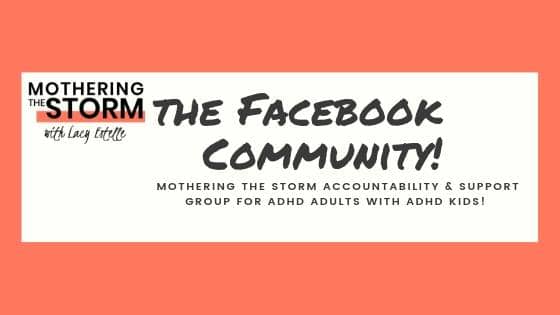This post may contain affiliate links. This means, if you make a purchase from a link on this page, I may receive a small commission at no extra cost to you. You can find our entire disclaimer here.
Tell someone else!
ADHD can bring on a wealth of obstacles every day. The secret is to execute a variety of tactics to manage it.
Exercising is one of the best approaches for adults navigating this condition. If you’re ready to find a solution that lasts, read the reasons why exercising helps with ADHD.

Click Here to Join the Mothering the Storm Facebook Group! An Encouragement Group For Parents who have ADHD and are also caring for an ADHD Child!
Increased Dopamine Levels
Dopamine is a neurotransmitter essential for attention regulation. It’s the “feel good” chemical that our brains release in response to reward and pleasure—and exercise is a natural and powerful method of maximizing this effect. Activities such as running, swimming, or even brisk walking prompt the production of dopamine, which uplifts your mood while sharpening your focus and concentration.
Incorporate regular workouts into your week, whether through a morning jog, an evening swim, or a lunchtime fitness class. Even mini-sessions, such as a quick 10-minute stretch, can provide a much-needed boost of dopamine to steer you through the day.
Reduced Hyperactivity
Hyperactivity goes hand-in-hand with ADHD. People often experience fidgeting and restlessness. Engaging in consistent physical activity provides a structured outlet for expelling energy.
Team sports such as soccer or non-contact activities such as rock climbing can each be highly beneficial. They both offer environments that allow individuals to release their energy while enjoying the social aspect of being among fellow enthusiasts.
Another particularly enjoyable sport that can be a perfect fit is pickleball. It combines elements of tennis, badminton, and ping-pong, providing a fast-paced game with plenty of movement. Pickleball offers an exciting opportunity to engage in physical activity while having fun and building social connections. All you need is the essential pickleball equipment to start playing the beautiful game!
Enhanced Cognitive Function
Physical activity improves brain health by enhancing memory, executive function, and cognitive flexibility. Exercise stimulates the growth of new brain cells and the release of brain-derived neurotrophic factor (BDNF), a protein that supports neuron growth and connections.
Structured activities, such as martial arts or yoga, are especially beneficial because they encourage concentration, coordination, and memory. Each of these components is likely to sharpen mental acuity. Regular participation in these disciplines can lead to improvements in task management, organization, and the ability to switch between tasks effectively, skills that are often challenging for individuals with ADHD.
Improved Mood and Emotional Regulation
ADHD isn’t just about concentration difficulties; it can also manifest in emotional irregularities such as mood swings, anxiety, and depression. One of the reasons why exercising helps with ADHD is because it can alleviate these various symptoms!
Take your bike for a ride in the local park, hit the trails for a hike, or engage in a group fitness class. For maximum emotional benefit, aim to work out with a buddy or join a community group that shares your passion for a specific type of physical activity.
Incorporating regular exercise into your routine is not just about physical health—it’s a holistic approach to managing ADHD that addresses many of the condition’s core challenges. So put on those running shoes, grab that racquet, and let the journey toward a more balanced life begin!








